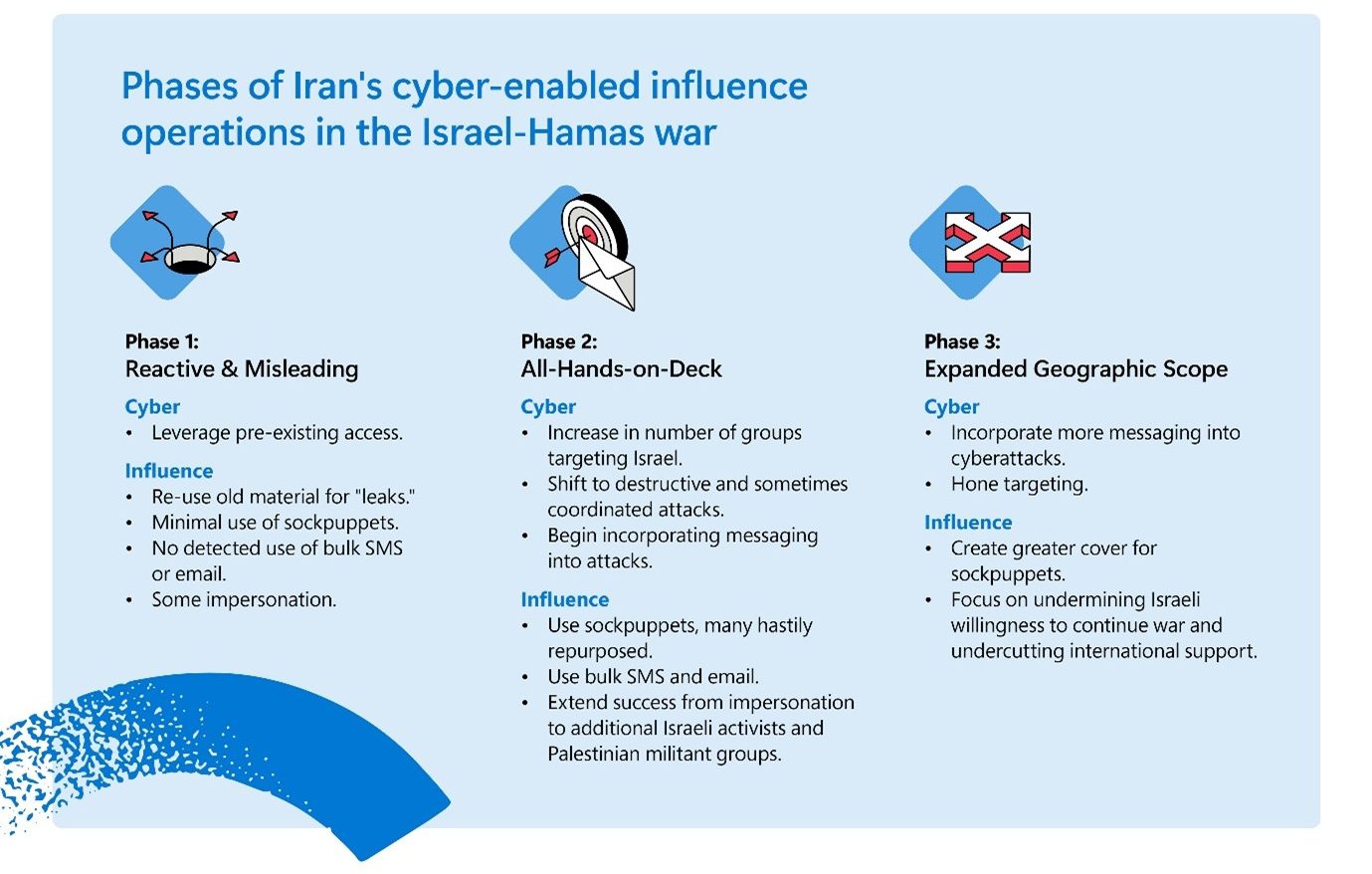
In the Internet era, warfare transcends the physical battleground, entering a domain where cyberattacks and influence operations (IO) wield the power to shape perceptions and destabilize nations. A recent report by the Microsoft Threat Analysis Center (MTAC) throws light on such a shadow war, revealing Iran’s concerted cyber efforts in the aftermath of the Israel-Hamas conflict that erupted in October 2023.
In the initial days following the outbreak of hostilities, Iranian government-aligned actors launched a series of hasty and seemingly uncoordinated cyberattacks and IO campaigns. These efforts aimed to bolster the Hamas cause and undermine Israel, alongside its political allies and business partners. Despite the early disarray, a notable escalation was observed both in the sophistication and the scale of operations. Traffic to Iranian state-affiliated news sites soared by 42% in the war’s first week, suggesting a deliberate strategy to amplify Iran’s narrative on a global scale.

The MTAC report highlights four key findings that underscore the evolution and impact of Iran’s cyber operations:
- Early Missteps and Misinformation: Many of Iran’s initial cyber forays consisted of repurposing old data breaches and overstating the effectiveness of their attacks. This phase of misleading claims and opportunistic strikes, however, quickly gave way to more organized and destructive efforts.
- Rapid Expansion and Sophistication: From nine active cyber groups targeting Israel in the war’s first week, the number grew to 14 by the fortnight. The operations shifted from sporadic attacks to a near-continuous assault, including sophisticated influence campaigns that leveraged social media platforms to spread disinformation.
- Geographic and Tactical Diversification: As the conflict progressed, Iranian actors widened their net, targeting countries like Albania, Bahrain, and the USA, perceived as Israel’s supporters. This expansion was paralleled by an increase in collaboration among Iranian cyber groups, enhancing their capability and efficiency.
- Strategic Use of Artificial Intelligence: A notable innovation was Iran’s disruption of streaming TV services with fake news reports delivered by an AI-generated news anchor, marking a new frontier in cyber-influence operations.
Iran’s operations can be dissected into three distinct phases, each marking an escalation in complexity and scope:
- Phase 1: Reactive and Misleading: The initial phase was characterized by disinformation and the use of dated material to claim cyber victories that had little impact.
- Phase 2: Coordination and Intensification: By mid-October, a significant uptick in coordinated cyberattacks and IO campaigns was observed, indicating a strategic shift towards more targeted and sophisticated operations.
- Phase 3: Global Ambitions: The final phase saw Iranian efforts extend beyond Israel, targeting nations across the globe. This phase not only demonstrated Iran’s intent to influence international perception but also highlighted its capability to execute complex cyber operations on a global scale.
The MTAC report paints a picture of a digital battleground where perception, misinformation, and cyber prowess are as critical as conventional military strength. Iran’s increasing reliance on cyber operations and influence campaigns in support of Hamas underscores a strategic pivot towards non-kinetic forms of warfare, aimed at destabilizing adversaries and shaping global narratives.
As the world edges closer to the 2024 U.S. presidential election, the shadows of 2020 loom large, with Iran potentially leveraging its cyber capabilities to influence the outcome, reminiscent of its attempts to incite violence by impersonating American extremists. The evolution of Iran’s cyber activities signals a future where cyber warfare and influence operations become a mainstay of international conflict, necessitating robust defenses and international cooperation to safeguard democratic institutions and maintain global stability.
Additional details are available in the analysis published by Microsoft Threat Analysis Center (MTAC) Iran surges cyber-enabled influence operations in support of Hamas.